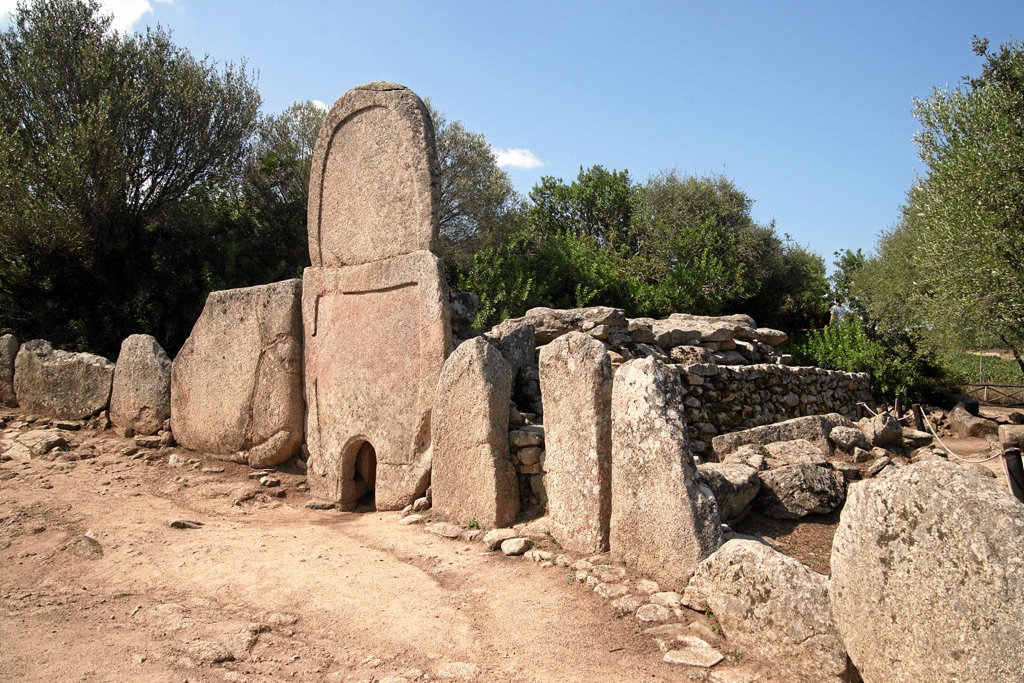Summary
Unveiling the Giants’ Grave
The Giants’ grave at Arzachena is a captivating historical site with a majestic aura from Sardinia’s ancient past. This Bronze Age collective burial site, known locally as ‘Tomba dei Giganti,’ dates back to around 1800-1200 BC. The monument boasts a central gallery grave, which is flanked by rows of stones that create an imposing semi-circular facade reminiscent of a robust shield embracing the spirits of the past. In its prime, the grave held the collective memories and remains of a vibrant Nuragic civilization, carrying stories of their societal structures and death rituals. Visitors are drawn not only to the grave’s historical significance but also to the surrounding landscape’s serene beauty, where the whispers of ancestry can be heard on the winds that sweep the Sardinian countryside.
Get your dose of History via Email
Nuragic Culture and the Giants’ Grave
Exploring further into the Giants’ grave at Arzachena allows for a deeper appreciation of the Nuragic people’s extraordinary engineering and cultural sophistication. It is one of the largest and best-preserved giants’ graves and stands as a testament to the Nuragic civilization’s remarkable capabilities. With a forecourt that faces the rising sun, it reveals their understanding of astronomy and spiritual significance of celestial bodies. Additionally, intricate carvings and symbols found on the stele, the uplifted stone at the site’s forefront, offer intriguing insights into their beliefs and customs. Scholars and enthusiasts alike continue to unravel the mysteries held within these ancient stones that tell a tale of communal identity and ancestral homage.
A Living Legacy for Future Generations
The Giants’ grave at Arzachena isn’t merely a static window into ancient times; it serves as a cultural touchstone that inspires contemporary reflection on the complexity of human history. As a preservation site, it invites current and future generations to connect with their Neolithic ancestors. The conservation efforts underscore the site’s value in understanding the socio-historical narratives of humanity. Furthermore, by promoting sustainable tourism, the site enables individuals from across the globe to marvel at this architectural feat, ensuring that the grave remains a place where historical inquiry and cultural respect intertwine, crafting a bridge from our distant past to the present day.
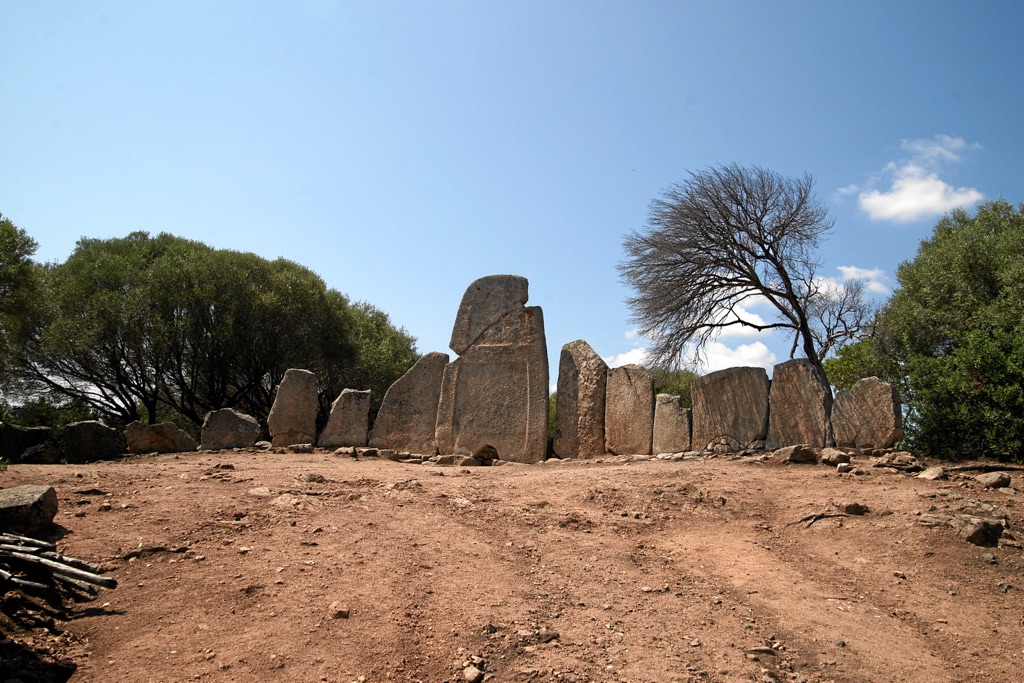
Historical Background of Giant’s grave at Arzachena
The Origins and Design
The Giant’s grave at Arzachena is a remarkable archaeological site nestled in the heart of Sardinia’s picturesque landscapes. Established during the Bronze Age, the structure is a collective tomb representative of the Nuragic civilization’s ingenuity. Its unique design features a long central gallery for burials, capped with a majestic stone slab. The use of large stone blocks, carefully placed in a semi-circular pattern, defines the ceremonial area and reflects an advanced understanding of construction techniques. Furthermore, these graves were communal spaces, suggesting a society that honored collective rituals and ancestry through impressive funerary architecture.
Symbolism in Stone
The central stele, a towering stone pillar, rises at the grave site, commanding attention and signifying the tomb’s entrance. This prominent feature is often engraved with symbols or bull’s horns, illustrating the importance of cattle in Nuragic culture. The monument’s alignment with the sun showcases a sophisticated knowledge of celestial patterns. During burials, it is believed these alignments served to guide the deceased on their journey to the afterlife. The intricate carvings hint at forgotten rituals and a deep reverence for nature, life, and the transition to the beyond.
Cultural and Social Insights
Examining the Giants’ grave at Arzachena allows historians to glean insights into the social and cultural frameworks of the Nuragic people. The scale and communal nature of the tombs suggest a society with organized social structures and collective practices. Archaeological finds, including pottery and metal artifacts within the graves, offer a glimpse into daily life, trade, and artisanship. Furthermore, the presence of these monumental tombs throughout Sardinia highlights a widespread cultural tradition, one that underscores the interconnectedness of Nuragic communities across the island.
Preservation Efforts and Tourism
Today, the Giants’ grave stands as a powerful symbol of Sardinia’s rich prehistoric heritage. Efforts to preserve the site involve meticulous care and a commitment to safeguarding it for future generations. As a result, it has become a significant cultural attraction, where tourists from around the world can step back in time and marvel at the legacy of the Nuragic civilization. Responsible tourism practices ensure that while the site remains accessible to the public, it also retains its historical integrity and continues to be a source of pride for the Sardinian people.
Connecting Past to Present
The Giants’ grave at Arzachena is more than an ancient monument; it is a living bridge connecting the present to a distant past. As visitors walk the same ground the Nuragic people once trod, they are reminded of the universal human experiences of life, death, and the desire to commemorate the departed. It endures as a place of quiet contemplation and a reminder of humanity’s shared heritage, urging each person to reflect on our place in the long and winding tapestry of history.
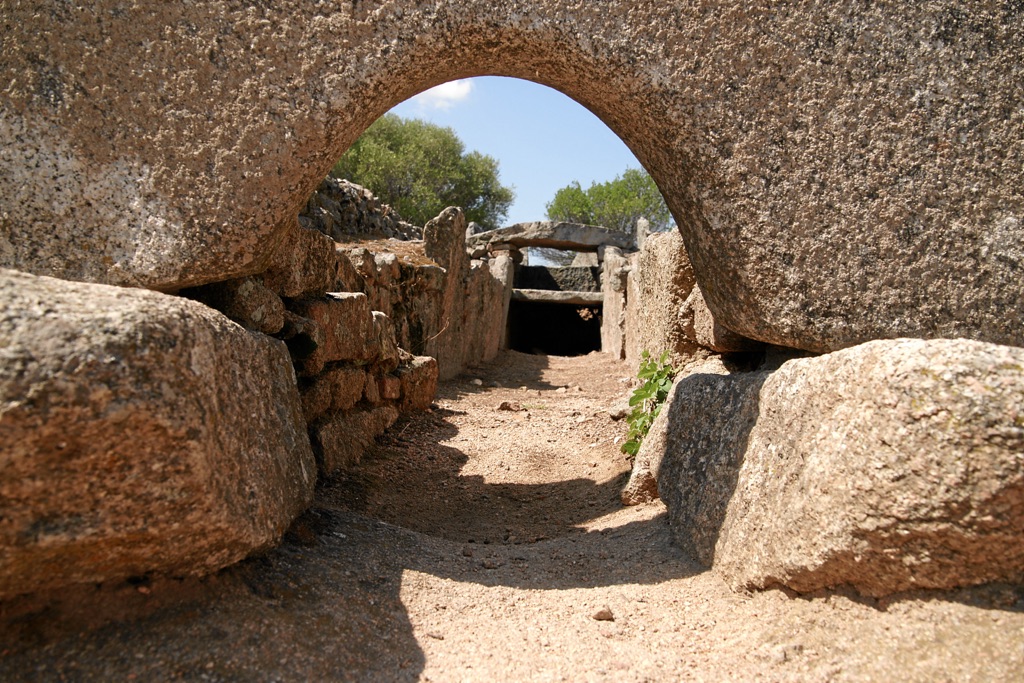
The Discovery of Giant’s grave at Arzachena
Early Recognition and Investigation
The initial uncovering of the Giant’s grave at Arzachena emerged during an era of heightened interest in Sardinian antiquities. Local inhabitants, familiar with the distinctive landscape of the region, reportedly first noticed the presence of the unusual stone formations. However, the site did not gain scholarly attention until the early 20th century. Excavations and detailed studies at this time brought to light the remarkable structure, offering the modern world a window into the Nuragic culture.
The Impact of Luigi Pellarano
Luigi Pellarano, an archaeologist deeply intrigued by Sardinia’s ancient history, played a pivotal role in bringing the grave to broader prominence. Through meticulous exploration and documentation, Pellarano and his team were able to identify the grave as a significant cultural and historical relic. Their efforts in the 1930s led to a deeper understanding of the site’s purpose as a communal burial ground, sparking further interest in the Nuragic period.
Collaboration with Jole Bovio Marconi
Subsequently, Jole Bovio Marconi, an esteemed archaeologist, took part in the exploration and research of the site. Her collaboration provided invaluable insights into the Giant’s grave’s construction and use. Under her guidance, the first comprehensive mappings of the site were undertaken. These served to catalog the grandeur and complexity of this ancient resting place.
Advancements in Archaeological Techniques
Over the years, advancements in archaeological methods have significantly influenced the study of the Giant’s grave at Arzachena. Techniques such as carbon dating and stratigraphy have allowed researchers to pinpoint the chronology of the site’s construction and usage. Furthermore, modern tools have unearthed a plethora of artifacts that bespeak the daily lives and spiritual practices of the Nuragic people.
The Legacy Continues
Today, the discovery of the Giant’s grave at Arzachena continues to resonate through academia and tourism alike. It stands as a symbol of human ingenuity and a testament to the cultural depth of Sardinia. As new findings come to light, the site promises to deepen our understanding of the prehistoric era and inspire ongoing fascination with the ancient world.
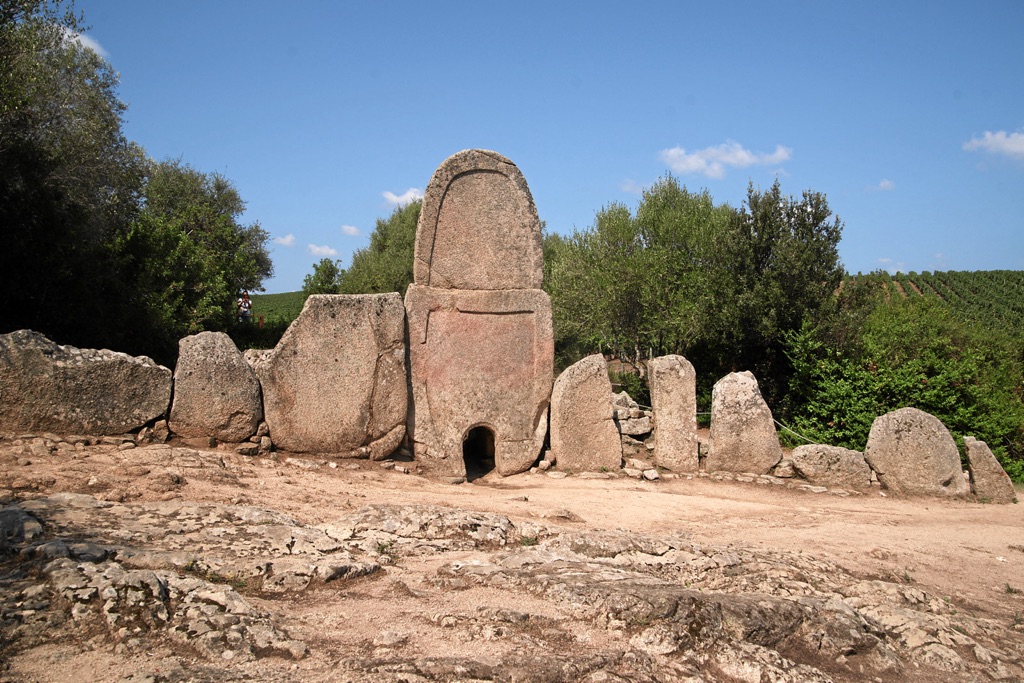
Cultural Significance, Dating methods, Theories and Interpretations
Nuragic Cultural Influence
The cultural significance of the Giant’s grave at Arzachena is profound, reflecting a sophisticated society that thrived in the Bronze Age. It serves as a testament to the Nuragic civilization’s social organization, religious practices, and architectural prowess. The size and careful construction of the graves indicate a community that placed a high value on collective memory and the veneration of ancestors. These sites are often found throughout Sardinia, revealing a uniform approach to death and the afterlife that was widely shared among the Nuragic people.
Unlocking Chronology: Radiocarbon Dating
Experts have utilized radiocarbon dating to date the Giant’s grave and gain a clearer picture of the Nuragic era. This technique, measuring the decay rate of carbon isotopes in organic materials, has pinpointed the grave’s origin to between 1800 and 1200 BC. This precise dating method helps archaeologists construct a chronological framework for the Nuragic civilization’s development and decline, thus piecing together Sardinia’s ancient history.
Interpreting the Giants’ Graves
Theories and interpretations of the Giants’ graves are varied and often intriguing. Some scholars suggest that the graves’ design, with their large central stele and semi-circular arrangement, was intended to mimic the houses of the living, thus creating a ‘house for the dead’. Others propose that these graves played a role in territorial claims or were sites for community gatherings and ritual activities. Though many theories circulate, the precise intent behind these monumental structures remains partly mysterious, inviting further research and exploration.
The Enigma of the Stele
The central stele often features intricate symbols, some of which resemble bull’s horns, leading to diverse interpretations. These carvings could represent strength, fertility, or social status, but the exact significance is still subject to scholarly debate. Understanding these symbols is essential to grasp the spiritual and cultural values of the Nuragic people, but the absence of written records from this period adds layers of complexity to their interpretation.
Integrating Modern and Historical Inquiry
As studies continue, the integration of modern technology with historical inquiry sheds new light on the Giants’ graves. Techniques such as 3D modeling and geographic information systems (GIS) contribute to more nuanced analyses of the site. These tools help experts visualize construction techniques and landscape relationships, offering fresh perspectives on the Giants’ grave at Arzachena’s role within the broader context of Nuragic society.
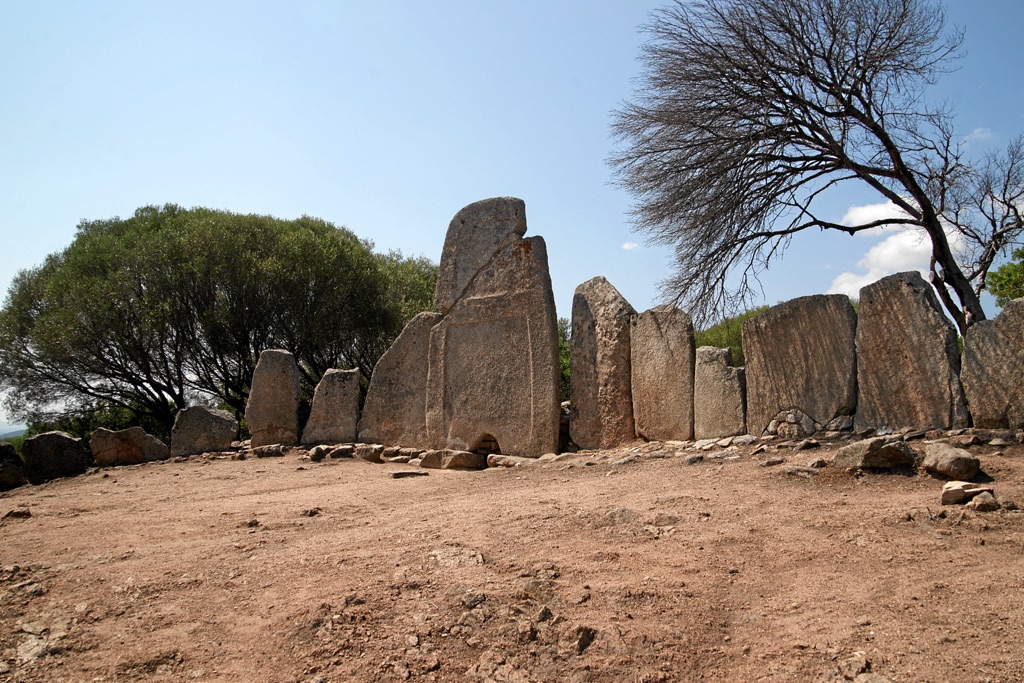
Conclusion and Sources
The Giant’s grave at Arzachena serves as an enduring symbol of the Nuragic era’s spiritual and societal complexity. This Bronze Age archaeological site stands as a testament to the intricate beliefs and communal practices of a bygone civilization. As researchers continue to delve into its mysteries, the fascination with these ancient structures only grows, bridging the gap between the past and present and enriching our understanding of human history.
References:
Blake, E. (2001). ‘Constructing a Nuragic Locale: The Spatial Relationship between Tombs and Towers in Bronze Age Sardinia’. American Journal of Archaeology, 105(2), pp. 145-161.
Dyson, S. L., and Rowland, R. J. (2007). ‘Shepherds, Sailors, & Conquerors: Archaeology and History in Sardinia from the Stone Age to the Middle Ages’. Philadelphia: University of Pennsylvania Museum of Archaeology and Anthropology.
Lilliu, G. (1982). ‘La civiltà dei Sardi dal paleolitico all’età dei nuraghi’. Torino: ERI.
Tykot, R. H., and Andrews, T. K. (eds.) (1992). ‘Sardinia in the Mediterranean: A Footprint in the Sea’. Studies in Sardinian Archaeology, Vol. 3. Sheffield: Sheffield Academic Press.
Webster, G. S. (1996). ‘A Prehistory of Sardinia, 2300-500BC’. Monographs in Mediterranean Archaeology. Sheffield: Sheffield Academic Press.

